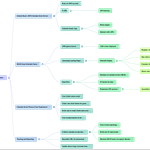FAQs
What is the core purpose of the AWS Calendar Invite Server?
The AWS Calendar Invite Server is designed to streamline the creation, management, and distribution of calendar invitations, particularly for large-scale event schedules, such as those of professional sports leagues (e.g., NFL, NBA, MLB).
It serves as a central hub where event data is ingested, stored, updated, and then utilized to generate and send personalized calendar invitations to attendees. This system allows organizers to manage event details easily and ensures recipients receive accurate and up-to-date invitations.
How does the system ingest event data from an organizer's calendar?
The ingestion process begins with the organizer (e.g., Mandy) using their existing calendar client (like Google Calendar) to send event data. They do this by sending "create commands" for calendar events to a specific email address, createcalendarsnack.com. This email address acts as a drop-off box for Amazon Simple Email Service (SES). From there, a component called "email box to ETL in" extracts, transforms, and loads the data into the AWS Calendar Invite Server. Each ingested calendar invite is disassembled, stored in a database, and assigned a unique identifier (UID).
How are updates and cancellations to calendar events handled?
The system supports the full CRUD (Create, Read, Update, Delete) cycle. If an organizer makes changes to an existing calendar event in their client, these updates are resent to the AWS SES box. The system then processes these changes, incrementing the UID for the updated event and modifying the stored data in the database. Similarly, if an event is canceled by the organizer in their calendar client, this action triggers a cancellation in the server's database, ensuring the event is removed from the system.
What are the key APIs and their functions within the pipeline?
The system utilizes several APIs:
API One (Embedded Calendar Invite API): This API is responsible for taking stored calendar invite data, matching it to an email address using the UID, reassembling the calendar invite on the fly, and then sending it out via AWS SES. It also handles sending updates or canceling invites based on changes to the original event.
Organizer APIs (2-7): These APIs are used to gather and pull data for the organizer. They facilitate displaying data in dashboards (like "Calendar Snack") and building web pages with embedded calendar invite buttons for various sending mechanisms (e.g., Mailchimp, bulk sending GUIs). These APIs are pulled from the API Gateway and integrated into the "email to ETLin" function.
How does the system facilitate sending calendar invites to attendees?
A key feature is the ability for customers (downstream actors like "Zach") to receive calendar invites from public-facing event pages. When a customer enters their email address on a page displaying event details (e.g., an NFL schedule built with Vue.js), the system uses API One to match the email address to the relevant UID in the Dynamo database. It then reconstructs the calendar invite dynamically and sends it to the customer. The system also tracks participant responses (yes, maybe, no) via API Gateway, which are then displayed in the event organizer's dashboard.
What kind of data is stored, and how is it used?
All calendar invite data, once ingested, is stored in S3 and DynamoDB. This stored data is fundamental for:
Display: Powering dashboards, analytics, and upcoming web pages that showcase event details.
Analytics: Providing insights into event engagement and participant responses.
Sending: Reassembling and sending calendar invites, updates, and cancellations.
Bulk Sending: Enabling organizers to send out numerous invites for transactional reasons through custom GUIs or email templates.
What is "Calendar Snack" and its role?
"Calendar Snack" is a component built by Arie McKinnis that acts as a display engine for the rich event data collected by the AWS Calendar Invite Server. It presents dashboards and custom web pages (like the NFL 2025-2026 season schedule) that visualize all the gathered calendar invite details. It integrates with the various APIs to pull and showcase this information, providing organizers with a comprehensive view of their events and allowing attendees to interact with the schedule and request invites.
How does the system ensure data consistency and real-time updates?
The pipeline is designed for real-time data consistency. When an organizer modifies an event in their calendar client, that change is immediately sent back through the ingestion process. The system then updates the corresponding record in the database, increments the UID, and, if applicable, pushes those changes to the display engines, allowing updated calendar invites to be sent. This ensures that the data displayed in dashboards and on public event pages always reflects the most current information available from the organizer's source calendar.
Briefing Document: AWS Calendar Invite Server for NFL Game Schedules
This briefing document outlines the core functionalities, architecture, and key benefits of the AWS Calendar Invite Server, a system designed to manage and distribute NFL game schedules as calendar invitations efficiently. The system, developed by Arie McKinnus, utilizes a simple yet robust pipeline to ingest, store, update, and send calendar invites, enabling flexible data manipulation and broad distribution.
Central Themes and Key Concepts
CRUD Engine via Email (Conceptual Dropbox): The system leverages standard calendar clients (e.g., Google Calendar) and Amazon Simple Email Service (SES) as its primary interface for Create, Read, Update, and Delete (CRUD) operations.
Core Idea: "Mandy loads all her games using her calendar client in this case here's Google calendar client she basically takes all the game data for the NFL and she sends them to create a calendarnack.com that box here create snack.com excuse me is a drop off box for Amazon simple email service and then we start our ingest process over here we call it email box to ETL in..."
Functionality: Users (organizers like Mandy) send calendar events as simple "create commands" to a designated email address (createcalendarsnack.com). This email box acts as a "conceptual Dropbox" for SES. Updates and cancellations are also handled by resending the modified event from the organizer's calendar client. This approach "keeps everything really simple and it allows for large manipulation of game schedules."
Technology: "This little piece of technology which is on three billion desktop clients across the world and mobile clients is the counter client so this becomes the create read update and delete engine and we abide by the commands so we call this the CRUD engine."
AWS Calendar Invite Server and Data Pipeline: The ingested calendar invite data is processed, stored, and retrieved through a structured pipeline within AWS.
Ingestion (Email Box to ETL In): "This data from Mandy's calendar is ingested, and the calendar invite is disassembled and stored as a new event in the database, and assigned a” Updates trigger a "UID increment added" workflow.
Storage (Principle #2): "We store all this data, so in principle number two, the storage system layer and the processing functions are used for display analytics and building upcoming web pages with all the data in them.” Data is stored in S3 and DynamoDB.
Extraction & Assembly (API One - ETL Out): "API one that is an ETL out... we basically take the calendar invite data off your personal calendar, we store it, we disassemble and store it mark the UID, and then we get it ready for using our APIs to be called and what's called the embedded calendar invite api one."
Reconstruction and Sending: The "calendar invite send API endpoint, which matches the email to the UID and reassembles the calendar invite for sending using AWS SCES raw API." This allows for on-the-fly reconstruction of invites.
Organizer-Centric Dashboard and APIs (Calendar Snack): The system provides organizers with tools to manage and visualize their event data, as well as to share event information with participants.
Display and Analytics: "Calendar snack is something that Arnie built that displays all the great rich data we have and then also the send APIs used in various things like the upcoming event, the bulk send engine, and then um, how we're doing these multi-event upcoming pages, which are essentially custom one-off pages in which Arie has built."
Organizer APIs (2-7): A suite of seven core APIs (2 through 7 for the organizer, API 1 for sending invites) is used to "gather and pull data for the organizer" and power features like "display these crazy dashboards."
Participant Engagement (API One - Send Invite): The system facilitates a seamless experience for participants. "Essentially, what happens when I put an email address in here for Zack at techchvader.com, I click a button, I receive a calendar invite pulled off this page, matching the email address to the UID out of the Dynamo database, and basically, we reconstruct the calendar invite on the fly every time."
Response Tracking: When a participant (e.g., Zach) responds to an invite (yes, maybe, or no), "we're actually requesting a participant calendar receipt to be sent back via API gateway and then we gather that here in the event organizer dashboard."
Real-Time Data Manipulation and Synchronization: The pipeline ensures that changes made by the organizer are reflected immediately across the system and in generated invites.
Live Demo Confirmation: The speaker demonstrates updating a game detail (adding "stop by surprise vendor booth 431 and get a free scoop of ice cream") on Mandy's calendar, which is then immediately reflected on the public-facing NFL schedule page. This proves a "fully qualified working pipeline."
Dynamic Page Generation: The public-facing NFL schedule page, built with Vue.js, "pulls out all the APIs and displays the data." This indicates dynamic content generation based on the stored and updated data.
Most Important Ideas/Facts
Simplicity of Ingestion: Utilizing existing calendar clients and email for CRUD operations simplifies the data input process for organizers.
Unique ID (UID) Management: Each ingested calendar event is assigned a UID, and updates trigger a UID increment, crucial for tracking and managing changes to events.
Disassembly and Reassembly of Invites: The system disassembles calendar invites for storage and then reconstructs them on demand, ensuring flexibility and efficient data management.
Embedded Calendar Invite API (API One): This is a critical endpoint that dynamically creates and sends personalized calendar invites to end-users based on their email and stored event data.
Organizer Dashboard (Calendar Snack): Provides a comprehensive view and control panel for organizers, displaying analytics and facilitating bulk sending.
Real-time Updates: The pipeline supports instantaneous updates, ensuring that any changes made by the organizer are immediately reflected in the display dashboards and new calendar invites.
Scalability: The use of AWS services (SES, DynamoDB, S3, API Gateway) suggests a highly scalable architecture capable of handling large datasets and numerous requests, as demonstrated by previous work with NBA, NFL, and MLB schedules.
Participant Feedback Loop: The system captures participant responses (yes/no/maybe) and routes them back to the organizer's dashboard, providing valuable engagement data.
Demonstrated Functionality: The live demo effectively showcases the end-to-end functionality, from data ingestion and updates to dynamic page display and personalized invite sending.
The 2 Person Pod on NFL Week One - How the Calendar Invite Pipelines Work with CRUD, Storage, and Sending of Calendar Invites. In the Next Pod, we will explore how updating the NFL game works for Customers who already have the Calendar Invites.







